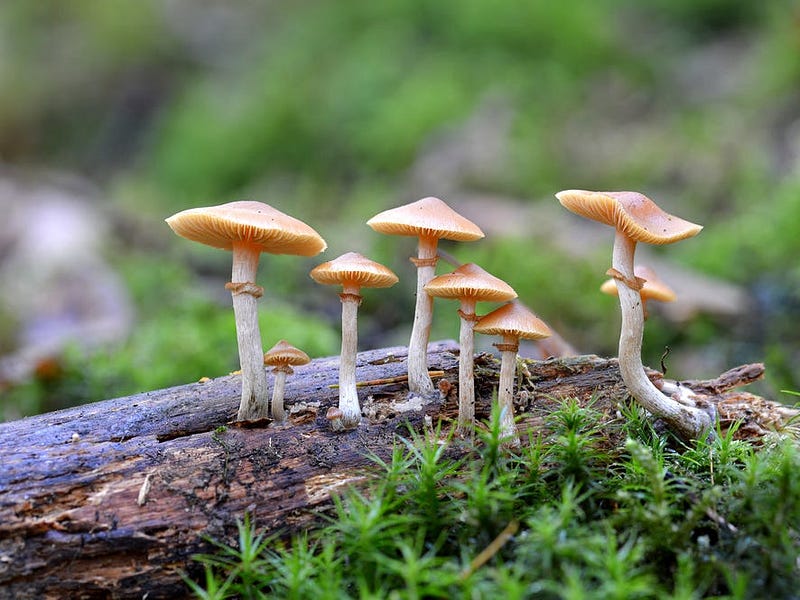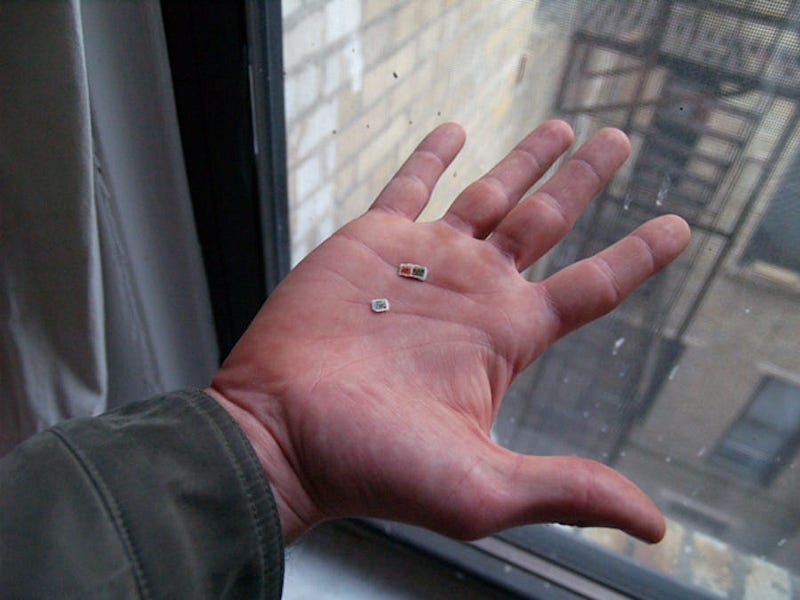Exploring the Intricacies of Microdosing Psychedelics
Written on
Chapter 1: Understanding Microdosing
Microdosing, which involves consuming minimal amounts of psychedelics over several days, is gaining popularity. Here’s what you need to know about it.

Psilocybin, commonly known as “magic mushrooms,” is a popular choice for microdosing. Photo: Peter Dejong/AP
By Allie Lembo and Julia Naftulin
Recently, a tech startup CEO was dismissed after microdosing LSD prior to a meeting. Justin Zhu, the former executive of Iterable, revealed to Bloomberg that he took a small dose of LSD to enhance his focus during a 2019 meeting. Co-founder Andrew Boni stated in an email to staff that Zhu's actions breached company policy, leading to his termination. This incident has rekindled discussions regarding the potential advantages of microdosing, a practice previously endorsed by Steve Jobs.
Essentially, microdosing entails taking very small quantities of psychedelic substances, such as LSD (lysergic acid diethylamide) or psilocybin mushrooms, on a semi-regular basis to possibly reap benefits like heightened perception, increased creativity, and reduced anxiety and depression. Despite the growing interest, only three studies have explored the scientific aspects of microdosing in humans, making the evidence for its therapeutic effects still inconclusive.
A self-reported study from February 2019 found that individuals who microdosed LSD or psilocybin reported greater open-mindedness, improved moods, and increased creativity compared to those who abstained from drugs. Another study from the same month indicated that regular microdosers experienced enhanced mental health and focus. However, a March 2020 investigation conducted by researchers at Imperial College London suggested that the purported benefits of microdosing might be attributed to a placebo effect.
Amanda Feilding, the founder and director of the Beckley Foundation, a UK nonprofit, aims to expand existing research by examining how microdosing affects creativity and cognitive abilities. Her ongoing study has shown preliminary results that suggest LSD microdosing could elevate pain tolerance.
Chapter 2: The Mechanics of Microdosing
Microdosing is not intended to induce a "high."

The dosage for substances like psilocybin or LSD should typically be around one-twentieth to one-tenth of the amount needed for a full psychedelic experience, according to Dr. James Fadiman’s research. This translates to approximately 5 to 10 micrograms of LSD or 0.1 to 0.4 grams of psilocybin mushrooms. Individual tolerances can vary, so the exact dosage may differ from person to person, with the goal being to achieve an enhanced state of awareness rather than hallucinations.
Most experienced users recommend against daily microdosing. Dr. Fadiman suggests a three-day cycle: take a dose on the first day, refrain from taking it on the second, and then wait until the fourth day to avoid tolerance buildup while experiencing residual effects from the previous dose. Keeping a journal to track personal responses is also encouraged.
However, it’s crucial to acknowledge that research on microdosing is still limited, and both magic mushrooms and LSD remain illegal to purchase in the U.S.
Section 2.1: Varieties of Microdosing
Not everyone refers to the same substances when discussing microdosing. While psilocybin and LSD are the most recognized, Third Wave also lists cannabis, ayahuasca, mescaline, and DMT as potential candidates for microdosing.
People who have experimented with microdosing report various effects, including enhanced creativity and improved moods. Steve Jobs, the late co-founder of Apple Inc., was vocal about his experiences with LSD. He described it as "one of the most important things in my life," emphasizing how it shaped his design philosophy and approach to creating meaningful products.
Many in California's Silicon Valley are now viewing microdosing as a means to boost productivity amidst demanding schedules. Ayelet Waldman documented her journey of microdosing LSD for 30 days to alleviate mood swings caused by menopause in her book, “A Really Good Day.” She asserts that microdosing significantly improved her mood and relationships.
Similarly, Erica Avery, a 27-year-old from Germany, shared that microdosing helped lift her from severe depression. An anonymous paramedic recounted how microdosing LSD provided subtle yet impactful changes to his emotional responses, contrasting it with traditional antidepressants.
A Canadian study involving participants from online forums on microdosing found that nearly 25% reported increased focus and energy, while 13% noted a reduction in anxiety and stress. Over 20% experienced a positive shift in their overall mood.
Despite these anecdotal reports, significant scientific research validating microdosing remains scarce.
Chapter 3: Broader Research on Psychedelics
While comprehensive studies on microdosing are limited, extensive research has been conducted on the effects of psychedelics in treating mental health conditions.

Two notable studies on psilocybin, one from Johns Hopkins University and another from NYU, have shown promising results. Both studies indicated that a single dose of psychedelic drugs could alleviate symptoms of common mental illnesses, including depression.
Further research has demonstrated that psilocybin can significantly reduce anxiety in patients with terminal illnesses, while ketamine shows potential as a rapid antidepressant. Additionally, MDMA has improved outcomes for individuals dealing with PTSD.
Though concerns about the risks of using these substances persist, the scientific community is increasingly open to the possibility of their therapeutic benefits. However, this acceptance tends to focus more on "trip treatments," where a substantial dose is administered, rather than microdosing.
For further insights, visit Insider’s homepage.
The first video titled "9B: Psychedelics - Micro-Dosing, Neuroplasticity and the Hallucinogenic Experience" delves into the science and experiences surrounding microdosing and its effects on the brain.
The second video, "A Macro View of Microdosing," offers an overview of the microdosing trend, its implications for mental health, and personal narratives from users.